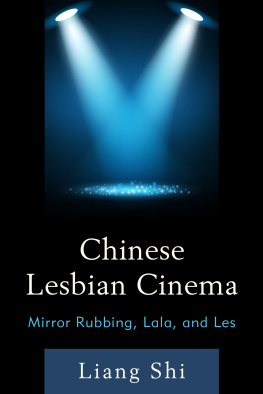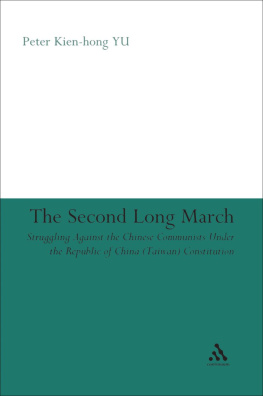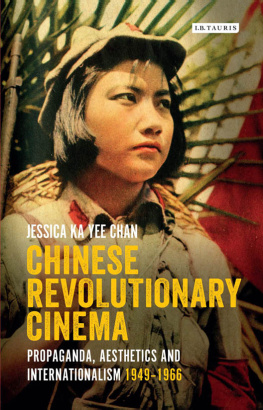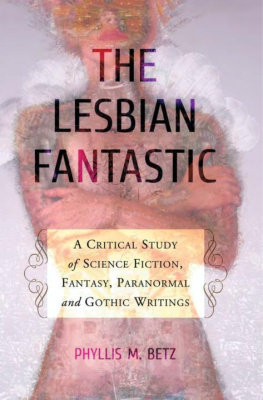Liang Shi - Chinese Lesbian Cinema: Mirror Rubbing, Lala, and Les
Here you can read online Liang Shi - Chinese Lesbian Cinema: Mirror Rubbing, Lala, and Les full text of the book (entire story) in english for free. Download pdf and epub, get meaning, cover and reviews about this ebook. year: 2014, publisher: Lexington Books, genre: Romance novel. Description of the work, (preface) as well as reviews are available. Best literature library LitArk.com created for fans of good reading and offers a wide selection of genres:
Romance novel
Science fiction
Adventure
Detective
Science
History
Home and family
Prose
Art
Politics
Computer
Non-fiction
Religion
Business
Children
Humor
Choose a favorite category and find really read worthwhile books. Enjoy immersion in the world of imagination, feel the emotions of the characters or learn something new for yourself, make an fascinating discovery.
- Book:Chinese Lesbian Cinema: Mirror Rubbing, Lala, and Les
- Author:
- Publisher:Lexington Books
- Genre:
- Year:2014
- Rating:4 / 5
- Favourites:Add to favourites
- Your mark:
- 80
- 1
- 2
- 3
- 4
- 5
Chinese Lesbian Cinema: Mirror Rubbing, Lala, and Les: summary, description and annotation
We offer to read an annotation, description, summary or preface (depends on what the author of the book "Chinese Lesbian Cinema: Mirror Rubbing, Lala, and Les" wrote himself). If you haven't found the necessary information about the book — write in the comments, we will try to find it.
Liang Shi: author's other books
Who wrote Chinese Lesbian Cinema: Mirror Rubbing, Lala, and Les? Find out the surname, the name of the author of the book and a list of all author's works by series.
Chinese Lesbian Cinema: Mirror Rubbing, Lala, and Les — read online for free the complete book (whole text) full work
Below is the text of the book, divided by pages. System saving the place of the last page read, allows you to conveniently read the book "Chinese Lesbian Cinema: Mirror Rubbing, Lala, and Les" online for free, without having to search again every time where you left off. Put a bookmark, and you can go to the page where you finished reading at any time.
Font size:
Interval:
Bookmark:
Chinese Lesbian Cinema
Chinese Lesbian Cinema
Mirror Rubbing, Lala, and Les
Liang Shi
LEXINGTON BOOKS
Lanham Boulder New York Toronto Plymouth, UK
Published by Lexington Books
An imprint of The Rowman & Littlefield Publishing Group, Inc.
4501 Forbes Boulevard, Suite 200, Lanham, Maryland 20706
www.rowman.com
Unit A, Whitacre Mews, 26-34 Stannery Street, London SE11 4AB, United Kingdom
Copyright 2015 by Lexington Books
All rights reserved. No part of this book may be reproduced in any form or by any electronic or mechanical means, including information storage and retrieval systems, without written permission from the publisher, except by a reviewer who may quote passages in a review.
British Library Cataloguing in Publication Information Available
Library of Congress Cataloging-in-Publication Data
Shi, Liang, 1956
Chinese lesbian cinema : mirror rubbing, lala, and les / Liang Shi.
pages cm
Includes bibliographical references and index.
ISBN 978-0-7391-8847-7 (cloth : alk. paper) -- ISBN 978-0-7391-8848-4 (electronic)
1. Lesbianism in motion pictures. 2. Lesbians in motion pictures. 3. Motion pictures--China. I. Title.
PN1995.9.L48S55 2015
791.43'653--dc23
2014034017
 TM The paper used in this publication meets the minimum requirements of American National Standard for Information Sciences Permanence of Paper for Printed Library Materials, ANSI/NISO Z39.48-1992.
TM The paper used in this publication meets the minimum requirements of American National Standard for Information Sciences Permanence of Paper for Printed Library Materials, ANSI/NISO Z39.48-1992.
Printed in the United States of America
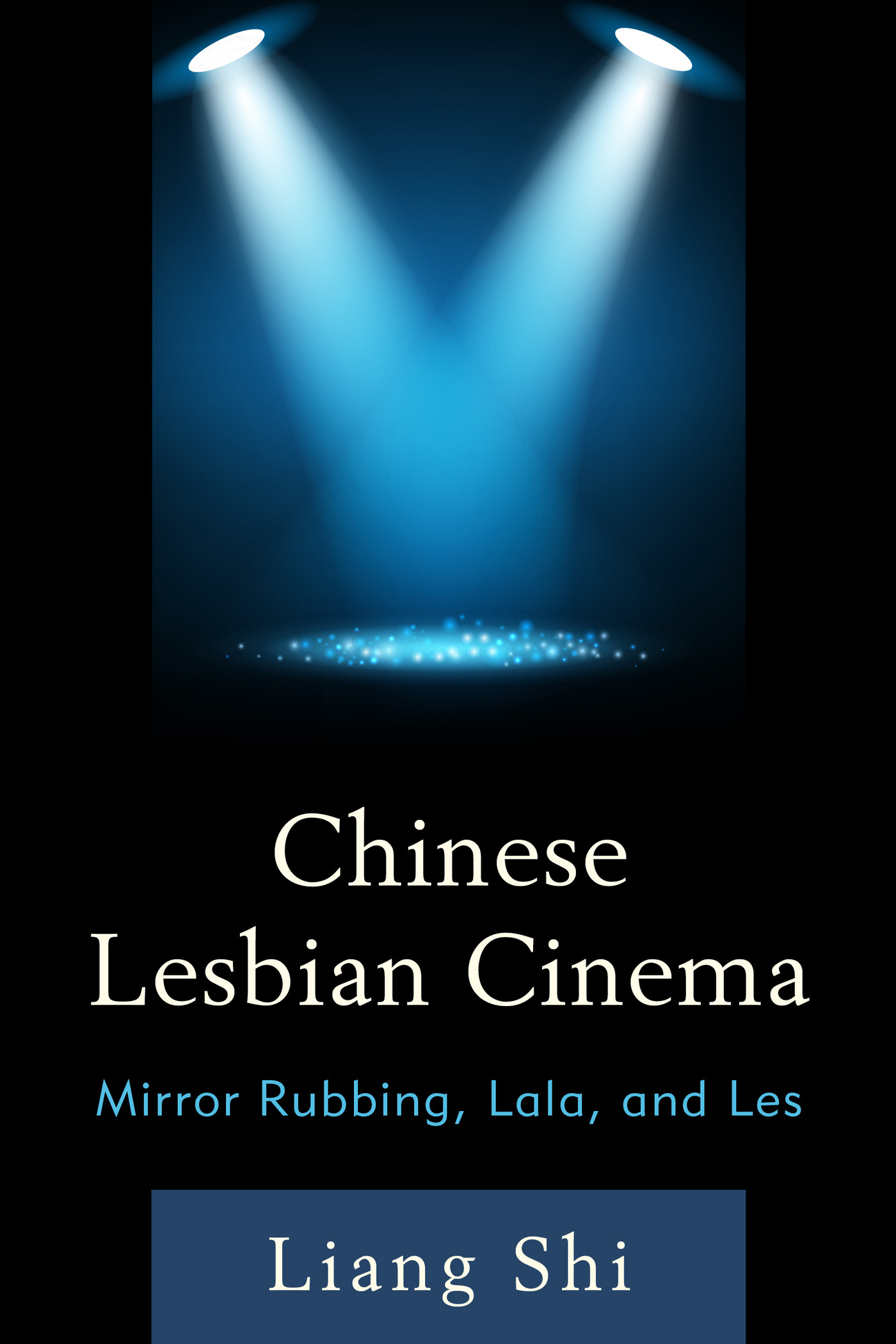
One day in July 2001, I met with Professor Zhong Dafeng of the Beijing Film Academy. I had just finished my previous book and was looking for possible new research projects. During our conversation, Professor Zhong mentioned Cui Zien and described him as the first out-of-the-closet gay faculty member at the Beijing Film Academy. Having written nothing about homosexuality, I nonetheless visited Cui Zien in his small apartment on campus, mostly out of curiosity. It was the beginning point of my education about Chinese homosexuality. Among many things we talked about that day, he told me about an independent filmmaker, Li Yu, who had just completed the production of Chinas first lesbian film Fish and Elephant. Through Cuis arrangement, I met with Li Yu the next day; once again mostly out of curiosity. I walked away from the meeting with a copy of Fish and Elephant and the knowledge that only a very limited number of people had it. Little did I suspect that this series of accidental meetings would set the course of my academic life for the next thirteen years. They first led to the publication of my article Beginning a New Discourse: The First Chinese Lesbian Film Fish and Elephant (2004), followed by several articles on Chinese lesbianism, and finally, more than a decade later, this book about Chinese lesbian cinema, authored by a straight male.
Special thanks go to Li Yu, Zhu Yiye, and Deng Yang, the directors of the works studied here, for their interviews, the valuable copies of their films they provided to me, and their permissions to publish stills from their films in this book. I also want to thank Cui Zien for his generous help as a major resource of information for my project. I am grateful to Miami University for awarding me a Grant to Promote Research that made it possible for me to travel to China to research, and for granting me a Faculty Improvement Leave that allowed me to concentrate on writing a major portion of this book.
A version of chapter 1, Mirror Rubbing: A Critical Genealogy of Pre-Modern Chinese Female Same-Sex Eroticism, was published in the Journal of Homosexuality (Vol. 60, No. 5, 2013, 75072). Part of the introduction appeared in the New Cinemas: Journal of Contemporary Film (vol. 10, no. 2 & 3, 2012, pp. 12743) under the title Contextualizing Chinese Lesbian Cinema: Global Queerness and Independent Films. An earlier and drastically different version of chapter 4, Beginning a New Discourse: The First Chinese Lesbian Film Fish and Elephant, was published in the Film Criticism (Vol. 28, No. 3, Spring 2004, 21-36).
The Hanyu Pinyin system of transliteration for Chinese terms is used in this book except in cases of direct quotations where a different Romanization system is adopted. All Chinese-English translations are mine unless noted otherwise.
This book is primarily a study of Chinese lesbian cinema, by which I refer to the body of Chinese-language feature films of female same-sex desire and relations produced in mainland China.
It is hardly an exaggeration to label the academic study of Chinese lesbian cinema as being unchartered territory. Aside from a few journal articles and book chapters pertaining to a handful of films, there has been virtually no research done in the field. This study undertakes an exploratory journey into the mostly untraveled land of lesbian cinema in hopes of producing a map of the landscape.
The focus of the book is Chinese cinematic representation of female same-sex desire, love, and relations. The research delves into four areas: 1) how are female same-sex desire, love, and relations represented? 2) what essential characteristics does this representation display? 3) what are the historical, social, and cultural forces that contribute to the formation of these essential characteristics? and 4) what meanings and significance does this cinematic representation have? It is my firm belief that these goals can be best served by employing not just one but multiple theoretical and analytical approaches.
My main findings and arguments include, but are not limited to, the following: Chinese lesbian films are the products of a group of young, unestablished women directors. They are neither lesbians nor lesbian activists, making them fellow travelers of lesbian discourse. Furthermore, they are not widely exposed to the global discourse on homosexuality and their understanding of it is, at best, fragmentary. The representations of sexual desire and love between women in their films, therefore, are rooted in second-hand experiences, which are more empirical than theoretical, and in multiple cultural traditions, which are both indigenous and global. In addition, lesbian cinema is part of Chinese independent film and, thus, is defined by many of its properties. Lesbian film, nonetheless, symbolizes a breakthrough by creating a new cinema that opens up a space that was not available or accessible on the mainland before its inception. These motion pictures present a new breed of charactersnamely, lesbiansas well as a new sexual subject on the screen for the first time in the history of Chinese cinema. Finally, and most importantly, although these films share numerous traits, the lack of predominant universal properties among them is even more striking. Each of them is unique in its representation of female same-sex desire, love, and relations. We would do them a great injustice by reducing these representations to a set of generalizations.
To accomplish the goals of the book, there is no lack of critical tools at my disposal: psychoanalysis, structuralism, poststructuralism, deconstruction, semiotics, new historicism, cultural studies, feminism, diaspora theory, and queer theory, to name just a few. Instead of swearing loyalty to one particular theory, I opt for an eclectic approach that allows me to utilize multiple perspectives to examine the objects under study from various angles. The strategy is based on the belief that any particular approach both offers unique insights and at the same time has blind spots that are illuminated by insights of other approaches. Having explained my position, I would describe the main approaches of the book as historicist and comparative. Chinese lesbian cinema is deeply immersed in abundant historical traditions. It is, for example, extensively informed of views that are traced back to Confucianism and Daoism. Its representation of lesbianism possesses traits that are found from the prototypal characters involved in female same-sex relations in classical Chinese historiographic and literary texts. At the same time, Chinese lesbian cinema is a hybrid of indigenous and foreign traditions. It is, however, not a construct of simple addition or combination of the two components that remain static and stable through time. Instead, it is a dynamic discourse, with the ever changing lesbian subjects caught in various currents, struggling to position and define itself through constant negotiations with different forces in contemporary China. My study situates lesbian cinema at the crisscross of localization and globalization, nationalism and transnationalism, colonialism and postcolonialism, history and present, politics and culture, mainstream and periphery, self and the other, elitism and mass culture, and individual and society.
Next pageFont size:
Interval:
Bookmark:
Similar books «Chinese Lesbian Cinema: Mirror Rubbing, Lala, and Les»
Look at similar books to Chinese Lesbian Cinema: Mirror Rubbing, Lala, and Les. We have selected literature similar in name and meaning in the hope of providing readers with more options to find new, interesting, not yet read works.
Discussion, reviews of the book Chinese Lesbian Cinema: Mirror Rubbing, Lala, and Les and just readers' own opinions. Leave your comments, write what you think about the work, its meaning or the main characters. Specify what exactly you liked and what you didn't like, and why you think so.

